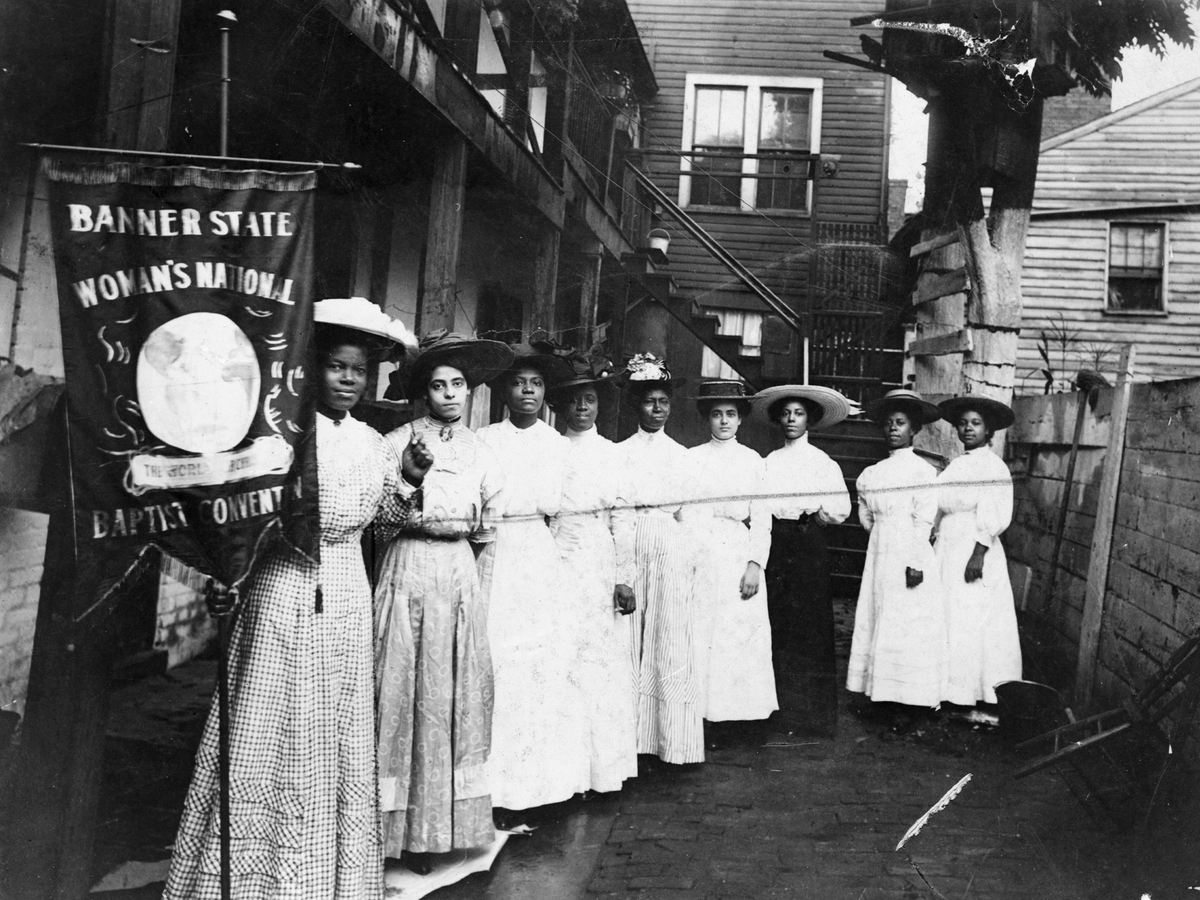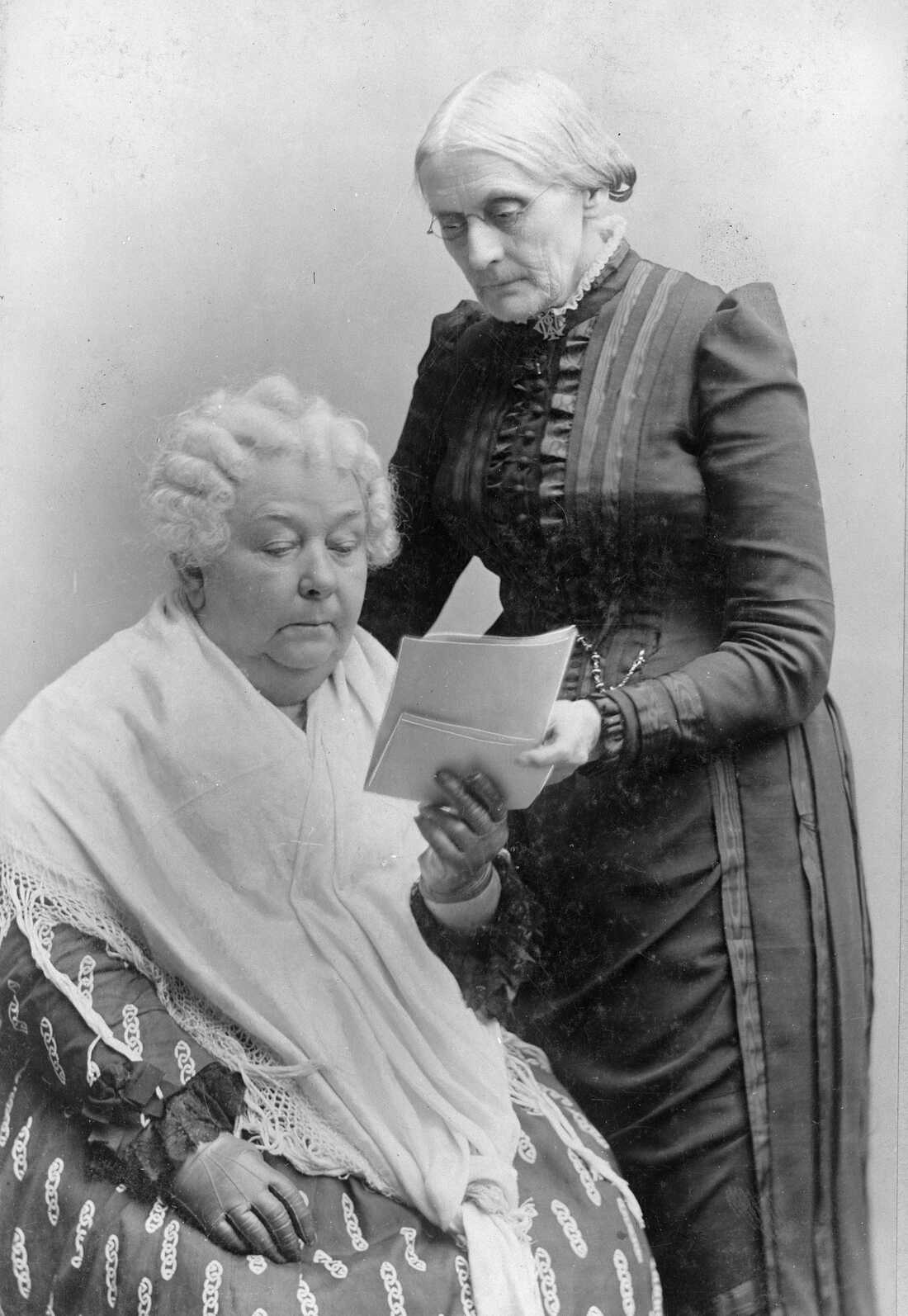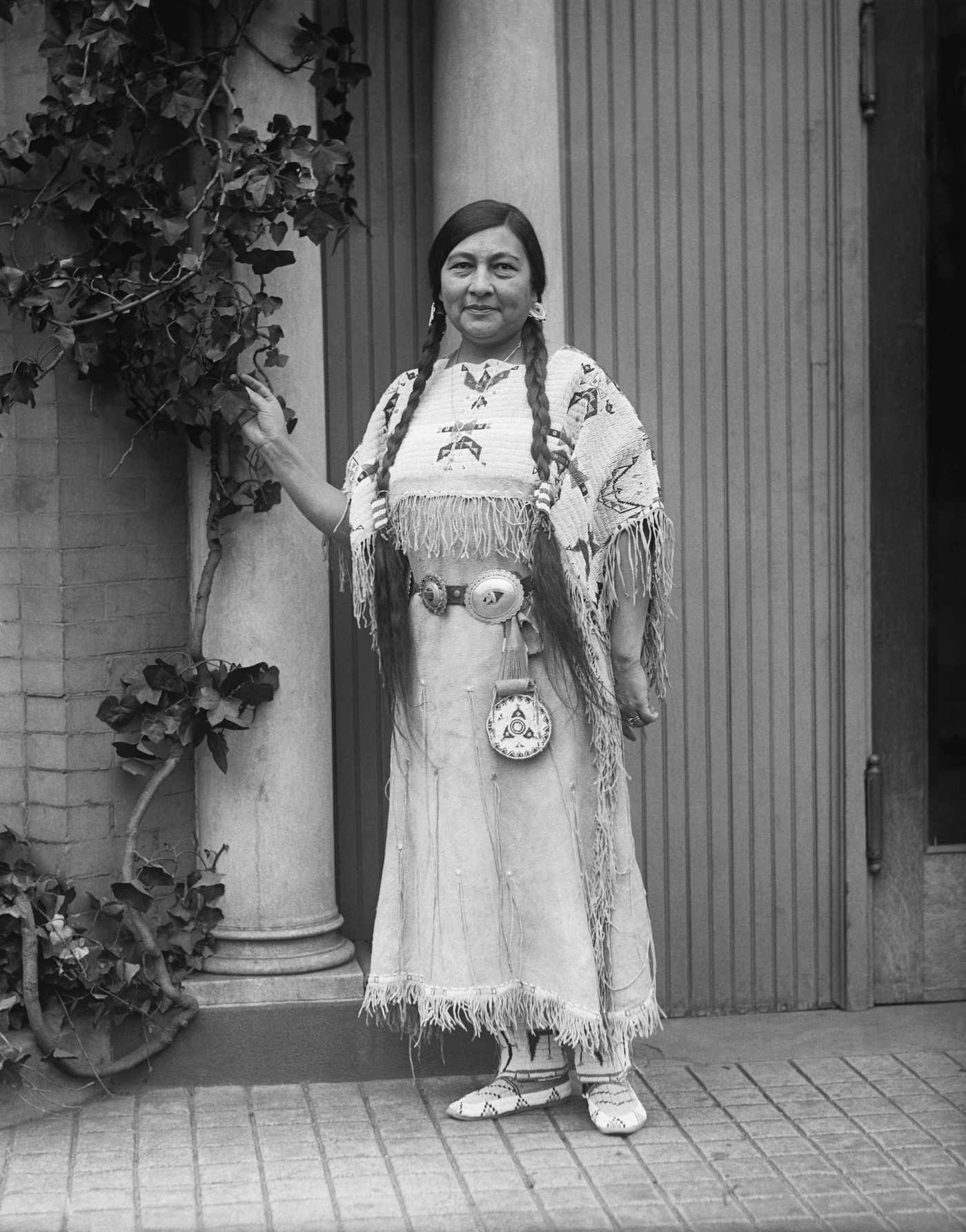New York Vote to Add More Women and People of Color in Pubic Art

Nannie Helen Burroughs holds a banner reading, "Banner State Adult female's National Baptist Convention" as she stands with other African American women, photographed between 1905 and 1915. Burroughs was an educator and activist who advocated for greater civil rights for African Americans and women. Library of Congress hide caption
toggle explanation
Library of Congress

Nannie Helen Burroughs holds a banner reading, "Imprint State Woman's National Baptist Convention" as she stands with other African American women, photographed between 1905 and 1915. Burroughs was an educator and activist who advocated for greater civil rights for African Americans and women.
Library of Congress
On Aug. 26, 1920, the 19th amendment to the U.S. Constitution officially took upshot when Secretary of State Bainbridge Colby signed a proclamation certifying its ratification.
The amendment promised women that their right to vote would "not be denied" on business relationship of sex.
Yet, even after that milestone, millions of people — women and men akin — were all the same excluded from the vote, as many barriers to suffrage remained.
The fight over the amendment was not just almost sex; it was also deeply entwined with race.

Early suffragist leaders Elizabeth Cady Stanton (left) and Susan B. Anthony later split off from their brotherhood with abolitionists. Library of Congress hide caption
toggle caption
Library of Congress

Early on suffragist leaders Elizabeth Cady Stanton (left) and Susan B. Anthony later split off from their alliance with abolitionists.
Library of Congress
While the women's suffrage movement had its roots in the anti-slavery movement, early suffragist leaders including Elizabeth Cady Stanton and Susan B. Anthony would later separate off from their brotherhood with abolitionists. They were outraged that, under the 15th subpoena, Black men would get the vote while white women were still denied.
Decades later, when the 19th amendment was upwards for argue, Southern politicians especially seethed over the prospect of enfranchising millions of African American women, just as the 15th amendment had enfranchised Black men — by law if non by practice.
"The debates are explicit!" says Martha S. Jones, professor of history at Johns Hopkins University and writer of the forthcoming book Vanguard: How Black Women Broke Barriers, Won the Vote, and Insisted on Equality for All.
"Racism runs through the debates over women'south suffrage ofttimes through and through," Jones says. "Racism is a language that is shared by suffragists and anti-suffragists alike."
Case in point: In 1919, just earlier the U.Southward. Senate voted on the 19th amendment, Due south Carolina Sen. Ellison Smith fulminated confronting what he called the "alien and unfit [Negro] race."
He proclaimed it "a criminal offence against white culture" that Black men were granted the vote with the 15th amendment.
Extending the vote to "the other half of the Negro race," Smith thundered, would unleash new "evils."
In the face of racist opposition, white suffragists betrayed the Blackness women who had also long fought for the right to vote, says Elaine Weiss, author of The Woman's Hour: The Great Fight to Win the Vote.
"We have to admit," Weiss says, "that [white suffragists] used as one of their politically expedient arguments, 'You know, there are more than white women who volition be voting than Blackness women. So don't worry. White supremacy is non going to be endangered.'"
In 1918, leading suffragist Carrie Chapman Catt framed the argument this mode in a letter of the alphabet to Northward Carolina Congressman Edwin Webb, trying to persuade him to vote yes on the 19th subpoena:
[The] present status in the Southward makes sovereigns of some negro men, while all white women are their subjects. These are sad just solemn truths. If you desire white supremacy, why not have it constitutionally, honorably? The Federal Amendment offers the style.
Of course, equally historian Martha Jones points out, whites in the Jim Crow South knew all likewise well how to keep African Americans from voting: Poll taxes. Literacy tests. Grandpa clauses. Violence and lynching.
"It is a bargain in 1919 and 1920," Jones explains. "Support for women's suffrage in exchange for giving individual states license to keep to keep Black Americans from the polls. They've long kept Black men from the polls, and now they're going to keep Black women from the polls as well."
Indeed, just ii months after the 19th amendment was ratified, the prominent African American suffragist and activist Mary Church Terrell wrote a alphabetic character to NAACP president Moorfield Storey that was filled with foreboding:
The colored women of the South will be shamefully treated, and volition not be alowed [sic] to vote, I am sure. I hope the Republicans will practice something toward enforcing the Fifteenth Subpoena. We are so helpless without the correct of citizenship in that section of the state where nosotros demand information technology most.
Along with African Americans, other groups who continued to be excluded from the vote included Asian American immigrants, who were long ineligible for naturalized citizenship on account of race, and only won the vote starting in 1943.
Amongst those advocating for both women'due south suffrage and immigrant rights was a young woman named Mabel Ping-Hua Lee. She was about 5 when her family unit managed to immigrate to the U.Southward. from Canton (now Guangzhou), China, in 1900 through a narrow exemption in the Chinese Exclusion Human activity.
Starting equally a teenager, Lee became a powerful voice in the suffrage movement, says Cathleen Cahill, associate professor of history at Pennsylvania State University, and writer of the forthcoming book, Recasting the Vote: How Women of Colour Transformed the Suffrage Move.
"She has a real presence," Cahill says. "People talk about her speeches, and virtually how the audience is 'Mabelized' by her ability. White suffragists think she'south phenomenal."
So much so that they ask the xvi-year-old Lee to march on horseback at the front end of a major suffrage parade in New York City in 1912.
It would take more than than xx years after the 19th amendment's ratification for Lee and other Chinese-American immigrants to become eligible for citizenship, and thus win the correct to vote.
As well excluded from the franchise: Native Americans, many of whom were not fabricated U.South. citizens until 1924.
Even after that, Native Americans in some states were considered "wards of the state" and weren't guaranteed the correct to vote until passage of the 1965 Voting Rights Act.
Voting rights activist Gertrude Simmons Bonnin (Zitkala-Sa) of the Yankton Sioux Nation was prominent in the women's suffrage community.

Voting rights activist Gertrude Simmons Bonnin (Zitkala-Sa) of the Yankton Sioux Nation was prominent in the women's suffrage community. Bettmann Archive/Getty Images hide caption
toggle caption
Bettmann Archive/Getty Images

Voting rights activist Gertrude Simmons Bonnin (Zitkala-Sa) of the Yankton Sioux Nation was prominent in the women's suffrage customs.
Bettmann Archive/Getty Images
"She and other nationally known native suffragists don't necessarily desire to only have U.S. citizenship," Cahill says. "They also want recognition of their citizenship in tribal nations and their treaty rights, particularly to land. They desire to use suffrage and U.S. citizenship to save their land and their communities."
After the 19th amendment is ratified, Cahill says, Bonnin "spends the next several years going to white women and saying, 'Now you accept the vote, delight fight for my people.' She says, 'Don't forget your Indian sisters.'"
"It's never a done deal"
"A victory for some was not a victory for all, and fights continue today," says Marcia Chatelain, professor of history and African-American Studies at Georgetown Academy.
"I think what this year provides us an opportunity to practice, as people celebrate 100 years of suffrage," she says, "is to inquire the critical question: suffrage for whom and at what cost?"
In answer to that question, Chatelain points to the current struggles over voting rights.
"No i should celebrate anything every bit long equally nosotros live in a country that has such strategically created voter suppression," she says. "We really can't claim that the The states had an incredible victory in 1920, when in 2020 in that location are nonetheless far too many barriers for people to vote."

A portrait of Martha S. Jones' great-groovy-grandmother, Susan Davis, who was born enslaved in Kentucky. Martha Due south. Jones hibernate caption
toggle explanation
Martha Southward. Jones

A portrait of Martha S. Jones' great-corking-grandmother, Susan Davis, who was built-in enslaved in Kentucky.
Martha S. Jones
For historian Martha Jones, the ratification of the 19th amendment "marks for African American women a start, not a finish."
"It fuels a new chapter in the struggle for voting rights in the United States," she says, "a move that Black women will lead all the way to 1965 and passage of the Voting Rights Act."
"One of the lessons that we acquire when nosotros compare 1920 and 2020," she continues, "is that voting rights is never a given. It's never a guarantee. It's not a done deal in the United states of america."
In her office, Jones can look up at a visual reminder of that long history.
Hanging on the wall is a portrait of her nifty-great-grandmother, Susan Davis, who was built-in enslaved in Kentucky.
Jones likes to imagine her so-80-year-onetime ancestor on election day 1920, hitching upwards her horse and buggy, riding into town, "and getting into that line — a segregated line, simply a line nonetheless — that would allow her and her daughter Lillian both to cast their outset ballots."
"I can't say for certain that Susan and Lillian voted on that twenty-four hours," Jones says. "I sure promise they did."
YouTube
Source: https://www.npr.org/2020/08/26/904730251/yes-women-could-vote-after-the-19th-amendment-but-not-all-women-or-men
0 Response to "New York Vote to Add More Women and People of Color in Pubic Art"
Postar um comentário